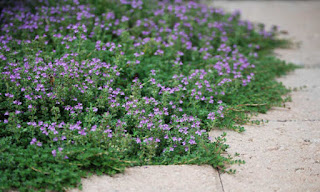How long does thyme last on plant?
How long does thyme last on plant?
I. Germination and Seedling Stage:
Thyme typically begins its life cycle as a small seed. Under optimal conditions, thyme seeds can germinate within one to two weeks. During this stage, thyme plants develop their first true leaves and establish their root system. This early phase can last for several weeks, depending on factors like soil temperature and moisture.
II. Vegetative Growth
As thyme plants enter the vegetative growth stage, they start to develop more leaves and stems. This is when the characteristic fragrance and flavor of thyme become more pronounced. The vegetative growth stage can last for several months, during which thyme plants continue to establish themselves and expand in size.
III. Flowering Stage
IV. Seed Production:
Once thyme plants have completed their flowering stage, they focus their energy on seed production. Thyme flowers produce seeds that are small, brown, and oval-shaped. These seeds are essential for the propagation of thyme plants. The seed production stage usually lasts for a few weeks, after which the plant's vitality may decline.
V. Senescence and Dormancy
After the seed production stage, thyme plants may enter a period of senescence, where the leaves start to yellow and die back. This is a natural part of the plant's life cycle. Thyme plants often go dormant during harsh winter months or dry seasons to conserve energy and protect themselves from adverse conditions. During dormancy, the above-ground parts of the plant may appear lifeless, but the root system remains active.
VI. Longevity
The longevity of thyme plants can vary depending on environmental factors, care, and the specific thyme variety. In optimal conditions, thyme plants can live for several years, continuously producing fresh leaves for culinary use. However, thyme is a hardy herb, and even if the above-ground portions of the plant die back during harsh conditions, the root system can often survive and regrow when conditions improve.
Conclusion
Thyme is a resilient herb with a unique life cycle that encompasses germination, vegetative growth, flowering, seed production, senescence, dormancy, and longevity. Understanding these stages can help herb enthusiasts and gardeners better care for their thyme plants. Whether you grow thyme for its culinary uses, medicinal properties, or ornamental beauty, knowing how long thyme lasts on the plant is valuable information for nurturing this versatile herb.




0 Comments